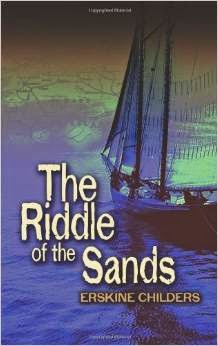How to negotiate boot Düsseldorf
We've been wanting to go to boot (pronounced bowt) for years now, but somehow never made it until this year. We'd heard it was the biggest boat show in the world. That it covered so many acres that it would take ten years to see it all. That Düsseldorf was an inland industrial city without much to offer. In the past, boot clashed with the London Boat Show, not that we ever attended. But that's now gone forever and everyone that used to go to London came to Düsseldorf instead this year. Finally, we got there, too. Yes, there were a lot of people, especially on Saturday.
So I'm going to write about our first experience - generally all pleasant - to help first-time goers find their way around. It really pays to have some of the inside story.
First, let me debunk some of the rumours. Yes, it is vast. Yes, it might take a year to see EVERYTHING. But first of all, it's not a boat show.
- Boot is a watersports show. It covers sailboats, powerboats, windsurfing, SUP, diving, surfing, kitesurfing, foiling, canoeing, kayaking, water skiing, on-water toys, and everything else you can imagine doing on the water. Some will interest you, some will not. There are 17 halls each of which is the size of a standard convention hall. Yes, it is vast.
- Düsseldorf is, for the most part, a post-war modern city having been bombed during and rebuilt after WWII. BUT, the old city, or Altstadt, was virtually unscathed in the war and is a charming district of bustling restaurants, breweries, shops, museums, galleries and exhibitions on the Rhine waterfront.
- With the boot show ticket, all public transport is free (in 2020) and it is very extensive, safe and mostly reliable (occasional late trains). You can get virtually anywhere for free during the show on a combination of buses, trams, underground (U) railroads and surface (S) trains that are all interconnected, including the airport.
- Getting to Düsseldorf is easy and reasonably priced from just about anywhere.
- There is a variety of accommodation to suit any needs.
- Food and drink are reasonable, and German food and beer are excellent.
- It's right on the Rhine River, has a beautiful riverfront promenade, and is historically important.
Some quick tips:
- Go to Messe Nord (the main north entrance stop on the train system) to buy tickets and enter the show. They have a coat check there. The entrance comes in at Hall 9, pretty much in the middle of the vast area. It is also the last stop on the transport system, so, on return, you will be most likely to get on first and find a seat.
- Halls 15-17 were for sailboats, from dinghies to 60+ footers, including a tank with optimist sailing for little ones who've never tried before (16 has the best lunch area)
- Hall 14 was sportfishing and paddling, Hall 11-13 were mainly diving including water tanks to try scuba and rebreathing, Hall 10 was everything you might need on a boat (ie. anchors, shackles, ropes, electronics, galley supplies, sails, winches, etc), Hall 9 has motors, trailers, etc. They even have a practice area where you can learn to drive a trailer!
- Hall 8a was surf sport and had a huge surf water tank -- 'the wave' -- for surfing indoors (AMAZING demonstrations!) and all the supplies for those sports.
- Hall 7 is all for maritime art
- Halls 3-6 were powerboat-oriented ranging from go-fast boats to classic wooden boats, to every type of RIB imaginable
- Halls 1-2 were megayacht exhibits, in my mind not really worth seeing although we did stroll through quickly. It is mind-boggling to imagine how they got these boats there and into the halls. We were told some sailed upriver and then were transported by land to the exhibit area.
- Most of the halls have stages on which talks are given throughout the day, but the vast majority are in German. The clientele is mostly German, Dutch, French and English.
- Most of the halls have food courts on the upper levels. Hall 16 had the best selection and well priced. BUT if you go on Saturday expect big queues at lunchtime. Sunday was not as bad.
- To view boats, you must sign up for a time slot in advance. If there's a boat you really want to see, go there first and get an appointment.
- The big media events are in the evenings. They had the Boat of the Year on Monday night and the Ocean Tribute stewardship of the oceans award on Tuesday night. On Sunday night they also had an Ocean Film Tour which we had signed up for but were too tired to attend.
- For the most part, the residents are welcoming and very helpful, and most speak English.
- Google knows everything. If you ask Google maps how to get to someplace in Düsseldorf, it will work out the best connections and it will be right.
 |
| Trams in Düsseldorf |




Comments
Post a Comment